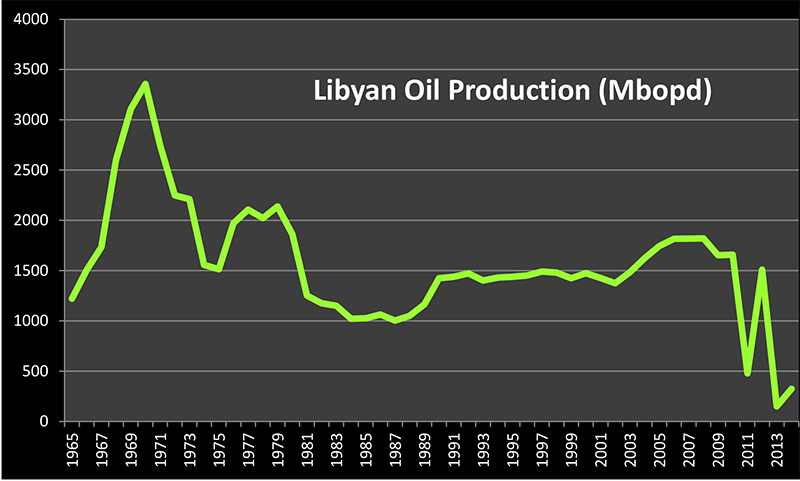The Brent oil price continues to slide as Libyan oil is expected to gradually return to the market after two key export terminals, which had been blocked for almost a year by rebels, return to use. Libya’s hydrocarbon production and exports have been substantially affected by civil unrest over the past few years. In the wake of the civil war in 2011 resulting in the fall of Col. Mu’ammar al-Qadhafi’s regime and the gradual consolidation of control over most parts of the country, oil production collapsed, although around 85% of it resumed within a fairly short time in the autumn and early winter of 2012.

Protests at oil fields escalated in June 2013 and crippled the oil sector for a second time since the Arab Spring, leading to a near-halt in production from the oil fields linked to ports after most storage tanks became full. Libya produced around 1.4 MMbopd before the protests started, but blockades and strikes reduced the output to a meager 150,000 bpd. Now production has increased somewhat to around 325,000 bpd, which is still only 23% of the post-2011 civil war production level. The deal to reopen the terminals presents a major breakthrough as the export capacity is expected to rise to 500,000 bpd, but it is still a long way from the pre-protests level. Libya’s economy is heavily dependent on hydrocarbons. According to the International Monetary Fund (IMF), oil and natural gas accounted for nearly 96% of total government revenue and 98% of export revenue in 2012. So obviously, the country’s economy has been suffering severely from the lost income from oil exports.
Caution Advised
Libya is a member of OPEC, so to ensure market stability, the increase in the country’s production will be coordinated with a cut in production by other members that have been compensating for Libya’s missing barrels. Libya has plenty of oil that can reach the market in the short term – around 7.4 MMb of crude oil in storage at Es Sider and Ras Lanuf ports alone. When the two terminals reopen, these barrels would be ready for export, covering the period it takes before production at the fields supplying the terminals is restarted. The market is now starting to price in that these barrels would reach the market soon and this has pushed down oil prices after the news about the reopening of the ports became known. Libya now holds the largest amount of proved crude oil reserves in Africa, and is an important contributor to the global supply of light, sweet (low sulfur) crude oil, around 70% of which was exported to the European market. The loss of the Libyan barrels has not been easy to replace as the world production capacity buffer, 80% of which comes from Saudi Arabia, is of more sour grades. Thus, the European Brent market is celebrating that more light crude will soon be flowing in the pipelines. With the reopening of these two key ports in the east of Libya, the market is hoping that the Sharara field in the west will soon resume production, returning the country to full capacity. European oil stocks have been trading at a five-year low for most of the year.
But it is wise to be cautious as the political situation is still unstable. There is a risk that this improvement will not last for very long if the political state of affairs in the country does not improve. It will, however, provide a breather to the tight oil market since the political risk has increased markedly with the unstable situation in Iraq.





